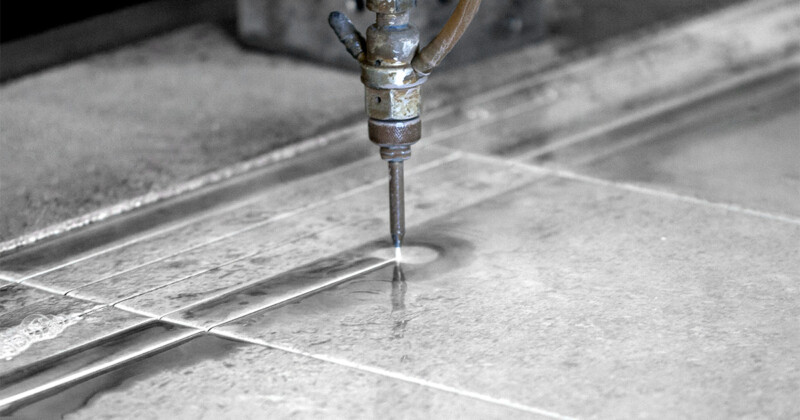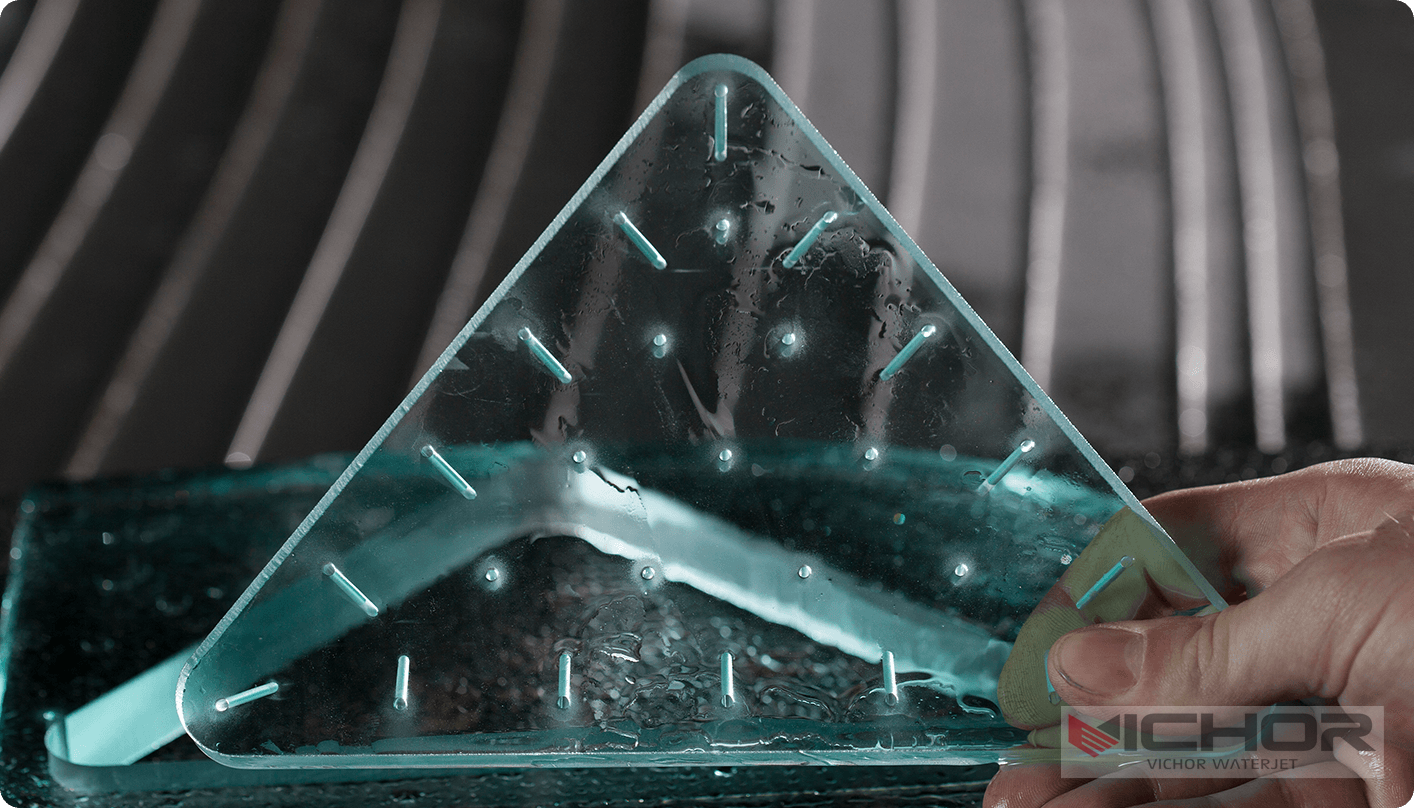
What You Need to Know About Water Jet Tile Cutting Machines
When it comes to precision tile installation, the tools you use can make all the difference. Among the various options available, the water jet tile cutting machine stands out as a revolutionary piece of equipment. Combining power, precision, and versatility, this technology has transformed how professionals and DIY enthusiasts approach tile projects. Whether you’re crafting intricate mosaics or fitting large-format porcelain slabs, understanding this machine is key to achieving flawless results. This article delves into the inner workings, benefits, and practicalities of using a water jet cutter for tiles, providing a comprehensive overview to guide your decision-making process.
How a Water Jet Tile Cutting Machine Works
At its core, a water jet tile cutting machine is a powerful tool that uses a high-pressure stream of water, often mixed with an abrasive substance like garnet, to cut through materials. The process begins with a high-pressure pump that intensifies water pressure to extreme levels, typically between 50,000 to 90,000 pounds per square inch (PSI). This pressurized water is then forced through a small orifice in a cutting head, creating a supersonic jet stream.
For cutting hard materials like ceramic, porcelain, or natural stone tiles, an abrasive material is introduced into the water stream within a mixing tube. This abrasive garnet sand transforms the coherent water jet into an incredibly effective cutting tool, capable of slicing through even the toughest tiles with ease. The machine is typically controlled by a computer numerical control (CNC) system, which guides the cutting head along a pre-programmed path based on a digital design. This allows for exceptional accuracy, enabling the creation of complex shapes, curves, and cutouts that would be nearly impossible to achieve with traditional mechanical cutters. The entire process is a cold-cutting operation, meaning it generates no heat-affected zones, which is crucial for preventing thermal cracking or damage to the delicate glaze on tiles.
The Unmatched Advantages of Using a Water Jet Cutter for Tiles
Why choose a water jet tile cutting machine over a conventional wet saw or manual cutter? The advantages are numerous and significant for anyone serious about quality tile work.
First and foremost is precision and complexity. Water jets can achieve tolerances within a few thousandths of an inch, allowing for incredibly intricate designs, sharp corners, and perfect geometric patterns. This makes them ideal for creating custom medallions, detailed borders, or complex mosaics without chipping or fracturing the material.
Secondly, it is a cold-cutting process. Unlike laser or plasma cutters, water jets do not generate heat. This eliminates the risk of thermal stress, micro-cracking, or altering the material’s structure, which is a common concern with heat-intensive cutting methods. The glaze on ceramic and porcelain tiles remains completely intact.
Versatility is another key benefit. A single water jet tile cutting machine can handle a vast range of materials and thicknesses. From soft ceramic tiles to incredibly hard and dense porcelain slabs over 3 inches thick, the same machine can cut them all effortlessly. It can also switch between different materials in the same job without changing blades or tools.
Finally, it offers a clean and environmentally friendly operation. The primary cutting medium is water and natural sand (garnet). It does not produce toxic fumes or dust, making it safer for the operator and the environment. The slurry produced can often be recycled, further reducing its ecological footprint.
Key Applications and Projects for Water Jet Tile Cutting
The applications for a water jet tile cutting machine extend far beyond simple straight cuts. Its capabilities unlock a new world of design possibilities in both residential and commercial settings.
In residential projects, homeowners use these machines to create stunning custom kitchen backsplashes with intricate inlays and personalized patterns. In bathrooms, they are perfect for crafting precise cutouts for shower valves, faucets, and drains in shower floors without unsightly breaks or chips. The technology is also indispensable for installing large-format tiles, which are increasingly popular but difficult to cut accurately with traditional tools.
For commercial projects, such as hotel lobbies, corporate offices, or retail spaces, water jets are used to produce branded logos and elaborate decorative elements directly from tile or stone. They are also essential for creating complex flooring patterns and designs that require hundreds of perfectly fitting pieces.
Beyond standard tiles, these machines excel at cutting natural stone mosaics, where delicate pieces must be shaped without breakage. They are also the preferred method for cutting exotic and high-value materials like agate, onyx, or fossil stone, where any error would be extremely costly. The ability to nest parts closely together on a single slab also minimizes material waste, making projects more efficient and sustainable.
Choosing the Right Water Jet Tile Cutting Machine: A Buyer’s Considerations
Selecting the appropriate water jet tile cutting machine requires careful consideration of several factors to ensure it meets your specific needs and budget.
The first decision point is pump type. There are two main types: intensifier pumps and direct-drive pumps. Intensifier pumps generate higher pressures (up to 90,000 PSI) and are known for their power and consistency, making them ideal for high-volume, professional use on hard materials. Direct-drive pumps are generally more affordable, operate at slightly lower pressures (around 50,000-60,000 PSI), and are well-suited for smaller shops or those working primarily with softer materials.
Next, consider the machine size and table configuration. The size of the cutting bed determines the maximum size of the tile or slab you can process. If you plan to work with large-format tiles, a generous table size is a must. Also, consider whether a flatbed or a down-draft table is more suitable for your workspace and material handling流程.
Control Software is the brain of the operation. User-friendly, powerful software is critical for translating designs into flawless cuts. Look for software that supports common file formats (like DXF or DWG) and offers features such as automatic nesting to optimize material usage.
Finally, evaluate the total cost of ownership. Beyond the initial purchase price, factor in the ongoing costs of abrasives, replacement parts (like high-pressure seals and cutting nozzles), maintenance requirements, and energy consumption. A reliable technical support and service network from the manufacturer is also invaluable.
Operating Tips and Best Practices for Optimal Results
To get the most out of your water jet tile cutting machine, adhering to best practices is essential. Proper operation not only ensures quality cuts but also extends the life of your equipment.
Material Preparation is the first step. Ensure tiles are securely fastened to the cutting table using a holding fixture or suitable masking tape to prevent movement during the cutting process, which can lead to inaccuracies or a beveled edge on the cut.
Abrasive Management is crucial. Use the correct type and size of abrasive garnet (typically 80-mesh for most tile work) and ensure it is dry and free-flowing to prevent clogs in the feed system. The abrasive flow rate must be calibrated correctly for the material thickness and desired cut quality.
Piercing Technique requires attention. Piercing directly through the glazed surface of a tile can sometimes cause splashing or minor chipping. Using a plunge cycle or piercing at a reduced pressure can help mitigate this. For very delicate tiles, starting the pierce from the edge of the material or using a sacrificial layer on top can provide perfect results.
Regular maintenance of the pump, cutting head, and motion system cannot be overstated. Regularly inspecting and replacing worn parts like the orifice (jewel) and mixing tube (nozzle) is necessary to maintain cutting speed and accuracy. Following the manufacturer’s recommended maintenance schedule for the high-pressure system is key to avoiding costly downtime.
Common Problems and Troubleshooting for Water Jet Tile Cutters
Even the best equipment can encounter issues. Here are some common problems users face with a water jet tile cutting machine and how to address them.
Chipping or Breakage on the Top Surface: This is often caused by an incorrect pierce technique or a worn orifice. The water stream loses its coherence if the orifice is damaged. Solution: Use a softer pierce setting and regularly inspect and replace the orifice.
Excessive Taper or Beveled Edges: A perfect water jet cut should be nearly vertical. Taper occurs when the cutting speed is too high or the nozzle is worn. Solution: Reduce the cutting speed for the specific material and ensure the mixing tube is in good condition and aligned correctly.
Slow Cutting Speed: This can be caused by a drop in water pressure, often due to worn pump seals or a clogged orifice. It can also be due to using the wrong abrasive or an incorrect abrasive flow rate. Solution: Check pump performance, inspect and replace seals and orifices as needed, and verify abrasive type and flow settings.
Abrasive Feed Issues (Clogging or Inconsistent Flow): Moisture is the enemy of abrasive flow. If garnet absorbs humidity, it can clog the feed line. Solution: Always store abrasive in a dry environment and ensure the feed hopper and lines are sealed from ambient humidity.
Water Leaks in the High-Pressure System: High-pressure fittings and seals are subject to extreme wear and can develop leaks over time. Solution: Regularly inspect the entire system for leaks. Most leaks require replacing the specific O-ring or seal. Never ignore a leak, as the high-pressure water can cause injury and damage to machine components.
In conclusion, the water jet tile cutting machine is a paradigm-shifting tool that offers unparalleled precision, versatility, and quality for any tile-cutting task. By understanding its operation, benefits, and maintenance needs, you can leverage its full potential to elevate your projects from ordinary to extraordinary. Whether you are a professional fabricator or a dedicated hobbyist, investing in this technology is a step toward achieving perfection in the art of tile installation.
continue reading




